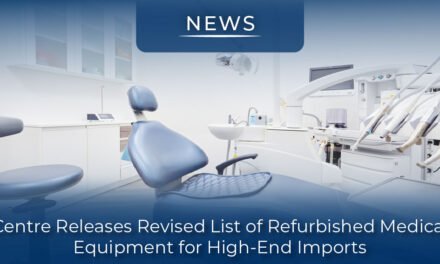
India’s Medical Device Industry: Key Opportunities in Rural Healthcare

India’s rural population, constituting nearly 65% of the country’s total, presents a vast yet underserved market for the medical device industry. Despite the challenges of limited infrastructure and accessibility, rural healthcare offers significant opportunities for medical device manufacturers to innovate and expand their reach. Addressing the unique needs of rural healthcare can not only improve health outcomes but also drive substantial growth for the industry.
1. Why Rural Healthcare is a Key Focus:
A. Health Disparities:
- Rural areas face a shortage of healthcare infrastructure, including hospitals, diagnostic labs, and trained professionals.
- The disparity in access to advanced healthcare technologies leads to delayed diagnoses and suboptimal treatments.
B. Growing Demand for Affordable Healthcare:
- Rising awareness of health issues and government initiatives like Ayushman Bharat are driving demand for medical devices in rural regions.
- Affordable and portable solutions are critical to meeting the healthcare needs of rural populations.
C. Untapped Market Potential:
- The rural healthcare market remains largely unexplored, offering significant opportunities for device manufacturers to expand their customer base.
2. Key Opportunities for Medical Device Manufacturers:
A. Portable and Point-of-Care Devices:
- Diagnostics:
- Portable diagnostic kits for blood tests, glucose monitoring, and infectious diseases like malaria, dengue, and tuberculosis.
- Point-of-care devices for rapid diagnostics, eliminating the need for centralized labs.
- Imaging:
- Handheld ultrasound and X-ray machines for on-the-spot diagnoses.
B. Telemedicine-Compatible Devices:
- IoT-enabled devices like digital stethoscopes, portable ECGs, and pulse oximeters support telemedicine platforms.
- Integration with telehealth services for real-time monitoring and consultation.
C. Affordable Therapeutic Devices:
- Low-cost ventilators, nebulizers, and oxygen concentrators for rural clinics and primary healthcare centers.
- Simplified dialysis machines and physiotherapy devices for long-term treatments in rural areas.
D. Maternal and Child Health Devices:
- Fetal heart rate monitors and portable ultrasound machines for antenatal care.
- Neonatal care devices like phototherapy units and CPAP systems for infants.
E. Wearable Health Monitors:
- Wearables for tracking vital signs such as heart rate, blood pressure, and blood glucose levels, enabling preventive care.
F. Sterilization and Infection Control:
- Solar-powered autoclaves and portable sterilizers for infection prevention in rural healthcare settings.
3. Technological Innovations to Address Rural Needs:
A. Frugal Innovation:
- Developing cost-effective devices tailored to the resource-constrained environments of rural healthcare.
- Example: Solar-powered diagnostic tools and low-cost imaging systems.
B. AI and Machine Learning:
- AI-driven devices for predictive healthcare and early diagnosis of diseases.
- AI-powered chatbots integrated with telemedicine for symptom analysis and triage.
C. IoT and Remote Monitoring:
- Devices equipped with IoT capabilities to transmit patient data in real-time to healthcare providers.
- Remote monitoring tools for chronic diseases like diabetes and hypertension.
D. Renewable Energy Integration:
- Solar-powered devices for regions with unreliable electricity.
- Battery-operated devices for portability and ease of use in off-grid areas.
4. Challenges in Rural Healthcare for Medical Devices:
A. Infrastructure Gapsl:
- Inadequate electricity, internet connectivity, and road infrastructure hinder the deployment of advanced devices.
B. Affordability:
- High costs of advanced medical devices limit adoption in price-sensitive rural markets.
C. Lack of Awareness:
- Limited awareness among rural populations and healthcare workers about the benefits of medical devices.
D. Workforce Shortages:
- Insufficient training for healthcare providers and technicians to operate and maintain medical devices.
E. Distribution and Logistics:
- Challenges in last-mile delivery and supply chain management due to remote locations.
5. Strategies for Capturing Rural Opportunities:
A. Developing Affordable Solutions:
- Focus on designing low-cost, durable, and easy-to-use devices tailored for rural settings.
- Collaborate with research institutions to innovate frugal medical technologies.
B. Leveraging Government Programs:
- Align product offerings with initiatives like Ayushman Bharat and public health campaigns targeting rural populations.
- Participate in government tenders and public-private partnerships to deploy devices at scale.
C. Expanding Telemedicine:
- Partner with telemedicine providers to integrate devices into virtual care platforms.
- Develop devices compatible with smartphones to increase accessibility in rural areas.
D. Building Local Partnerships:
- Collaborate with local NGOs, self-help groups, and community health workers (ASHAs) to increase awareness and adoption of devices.
- Establish partnerships with rural healthcare providers for training and distribution.
E. Enhancing Distribution Networks:
- Invest in robust supply chain management systems to ensure timely delivery of devices to remote areas.
- Create rural hubs to facilitate last-mile connectivity.
F. Training and Education:
- Conduct training programs for rural healthcare workers on the use and maintenance of medical devices.
- Develop user-friendly interfaces and multilingual instruction manuals for devices.
6. Case Studies and Success Stories:
A. Portable ECG Machines:
- Low-cost, portable ECG machines by Indian startups are enabling rural doctors to diagnose cardiovascular conditions on the spot.
B. AI-Powered Diagnostic Kits:
- AI-driven tuberculosis diagnostic kits are being deployed in rural healthcare centers under government health programs.
C. Telemedicine Integration:
- IoT-enabled devices like digital stethoscopes and portable blood analyzers are supporting telemedicine consultations in remote areas.
D. Fetal Monitoring in Rural Clinics:
- Portable fetal dopplers and ultrasound devices are reducing maternal and infant mortality rates in underserved regions.




























